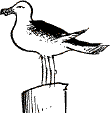
SEARCHABILITY MEANS DIRECT INFORMATION ACCESS
Provide an index.
The largest of information systems must include search features.
|
|
SEARCHABILITY MEANS DIRECT INFORMATION ACCESS Provide an index. The largest of information systems must include search features. |
|
ADVANTAGES |
These features help overcome the disadvantages of the purely browsable system. They have a number of distinct advantages.
As described in the previous section, your conception of the information universe is not necessarily the same as your reader's. While you try to group things in the most logical manner, your reader's "logic" will be different than yours. Searchability can help over come this discrepancy by allowing the reader to create their own set of logically similar items. Searchability readily lends itself to locating known items rather than making the reader browse down a number of menus to get what they want. Similarly, a reader may have used an item from you before and not put it into their hotlist. If you have searching mechanisms in place, then it may be easier for the reader to find the item again. Searchability works independently of your collection's size. Browsable systems begin to break down after the collection becomes too large. The effectiveness of searching an information system is not directly impeded by the size of the system. |
|
DISADVANTAGES |
Yet, purely searchable systems are not perfect either. Users:
In order to effectively search an information system, the reader must know the query language of the search engine. This may include Boolean logic or Unix regular expressions. They may have to know the meaning of right-hand truncation and the symbol for its use. While this sort of knowledge is necessary to use the system, it is irrelevant to the information itself and is seen by the reader as an impediment. The ability to search an information system assumes your readership has a preconceived idea describing what they need. This is a notorious example of the chick and egg problem.
Finally, totally searchable systems require the searcher to know the data structure of the indexed collection. Is the data divided into fields? If so, what are those fields and how do they specify them in their query? |
|
GUIDELINES |
What to do? Here are some guidelines for creating searchable systems.
Just as "about" texts are necessary in a browsable system, help texts are necessary for searchable systems. Help texts describe the features and limitations of the system. They list system's data structure including fields available for searching and the contents of those fields. Help texts also list plenty of example searches and provide explanations on what the end-user should do if they encounter too many or too few results. Map located items to similar itemsAfter items are located with the search mechanism, there should be links to similar items. This answers the perennial question, "Can you find me more items like this one?" These links should go directly back to your browsable collection where the end-user can freely "wander". From there the end-user will have the ability to see terms that can be applied to more searches. This is where you provide the end-user with the vocabulary terms of your system, in case they are unfamiliar with your system of information organization. Provide simple as well as "power user" search mechanismsSimple search mechanisms will be most useful for the first-time or casual end-user. Unfortunately, these same mechanisms often return too many or too few "hits". Providing power user search mechanisms like field searching, truncation, Boolean qualifiers, and number-of-term limitations can compensate for the simple searches. Unfortunately, the cost of these services is effectively describing the more powerful searching mechanisms to the end-user. Again, readability comes into play. |
|
SOFTWARE |
Readability is by achieved by exploiting HTML. Browsability is most effectively and efficiently via datbase applications. Searchability is acquired through indexing HTML files or directly searching the contents of a database. Below is a non-exhaustive list of software to help accomplish the goals of browsability and searchability:
|
|
SEE ALSO |
|
Version: 1.5
Last updated: 2004/12/23. See the release notes.
Author: Eric Lease Morgan (eric_morgan@infomotions.com)
URL: http://infomotions.com/musings/waves/